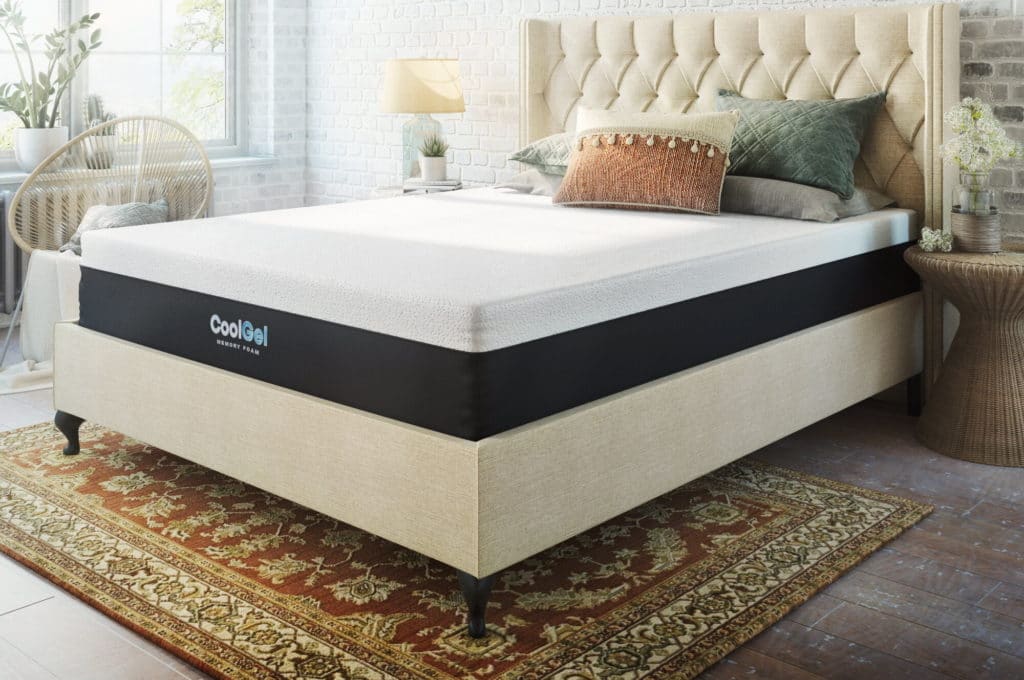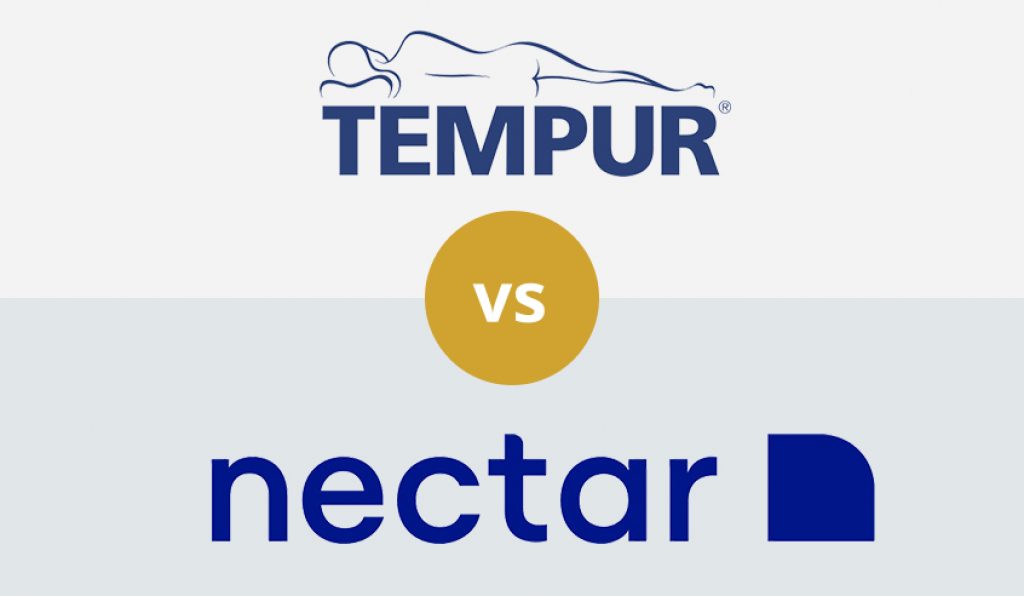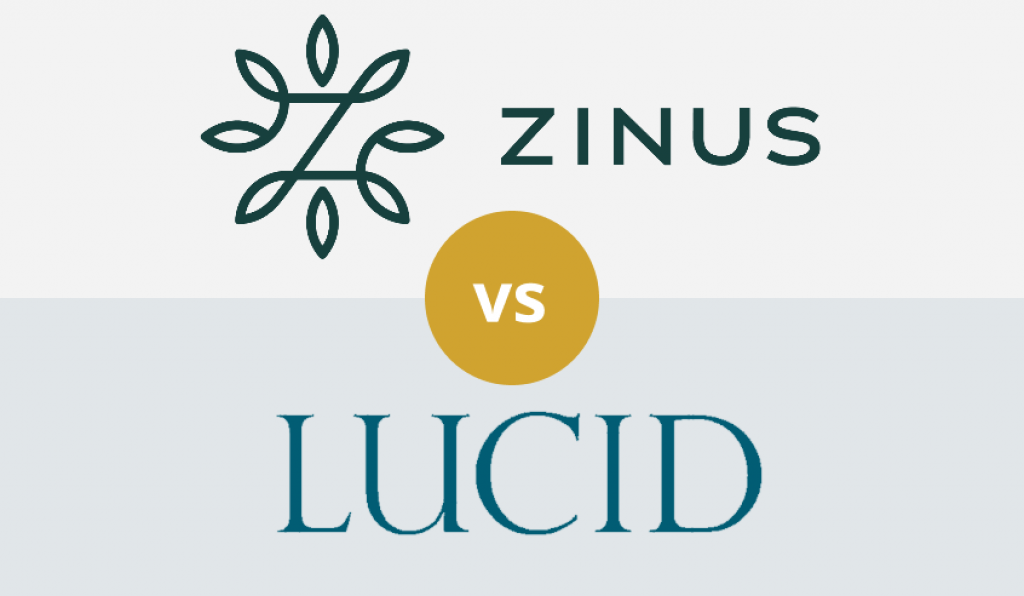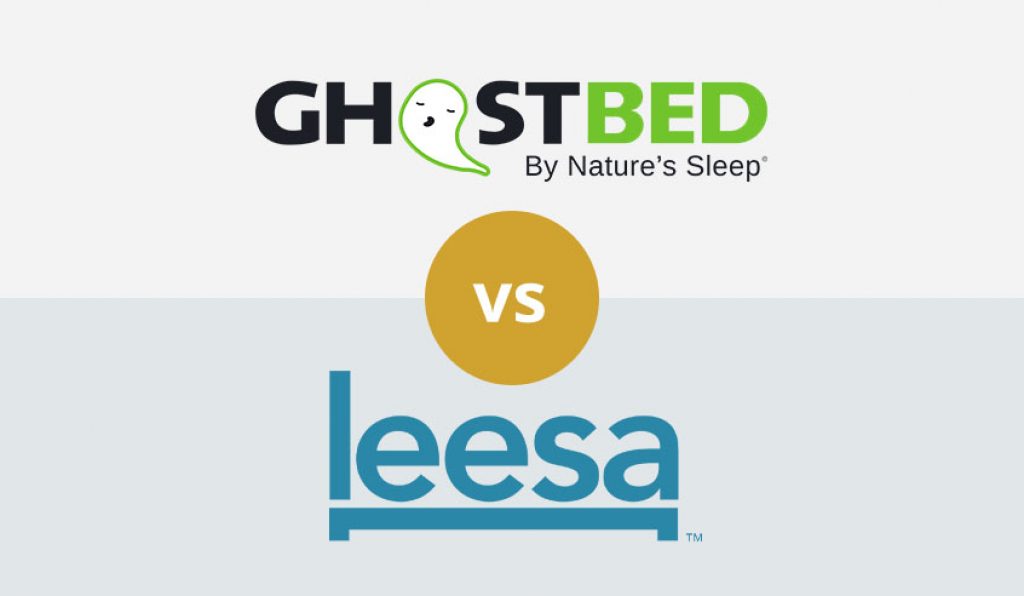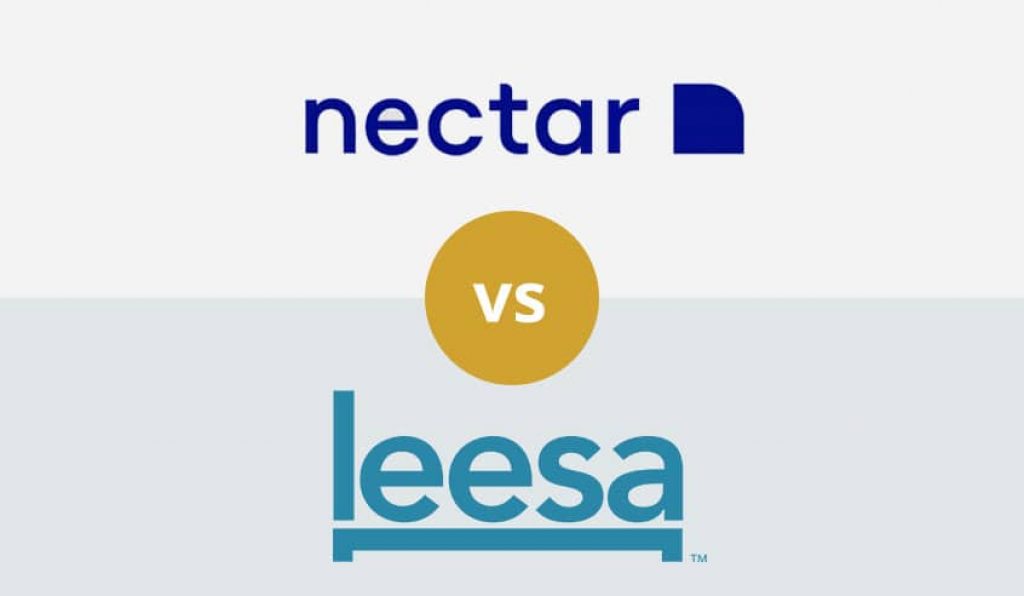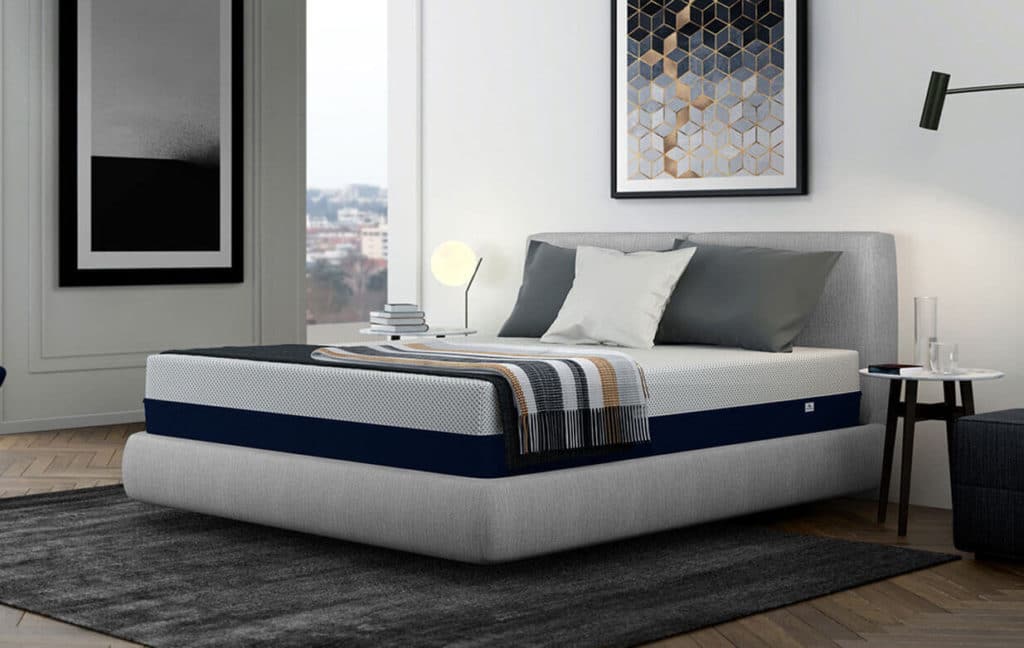

Every athlete knows that getting a good night’s sleep every single night is a key component of recovering between workouts. Not every bed is up to the task of keeping your body cool and comfortable so that you can sleep well and wake up feeling refreshed. But thankfully, there are a number of mattresses for athletes that are designed to cushion your joints, neck, and back while keeping you cool throughout the night so you can always get the rest you need.
To help you find the best mattress for athletes, we considered several features of these mattresses. Most importantly, we looked at how the mattress is designed and whether that is optimal for recovery. Specifically, we looked for padding where it’s needed around the spine, neck, and joints and for heat dissipating materials that prevent you from overheating during the night. Of course, we also considered all the standard, yet important mattress features – style of construction, available sizes, firmness, and thickness.
We spent tens of hours researching mattresses that athletes already prefer and others that look promising, poring over customer reviews and technical specifications. The result is our list of the 10 best mattresses for athletic recovery, and the Molecule 2 Mattress is our Editor’s Choice. Continue reading for detailed reviews of each mattress, including pros and cons. Our buying guide covers everything athletes need to know when choosing a mattress to help them recover.
More features: Air-Engineered comfort and advanced temperature regulation; made in the USA
Our Editor’s Choice mattress from Molecule was crafted from proprietary foam layers, drawing on lessons from what has worked well in other high-end mattresses for athletes. To fully understand what this mattress offers, it’s important to recognize the unique design of Molecule’s Molecularflo open-cell foam and 5-zone dynamic response layer.
The Molecularflo open-cell foam is a completely new type of memory foam developed by Molecule for this bed. Compared to regular memory foam, it boasts seven times more air flow by volume – and continues to allow air to flow even when you’re compressing it by laying in the bed. That makes a world of difference when you’re sleeping, since the heat from your body can easily escape rather than build up around you.
The three-inch Recoveryflo 5-zone dynamic response layer is also incredible in its own right. The first zone, around the head of the mattress, features hexagons of varying density to support your head and keep your neck in line with the rest of your body. Three variable zones in the middle of the bed provide firmer support to hold the weight of your body, while offering enough give to allow your spine to remain in alignment. The final zone, for your legs and feet, is similar to the head zone to keep them in line with your spine.
Even the support foam in this bed was re-engineered. Molecule’s Countourflo foam offers better airflow than traditional high-density support foam, and having seven inches of it is plenty for even heavyset athletes.
All this innovation makes the Molecule mattress one of the more expensive options for athletes, but the company recognizes that and offers a 100-night sleep trial and a lifetime warranty to provide peace of mind. Plus, the mattress uses an eco-friendly manufacturing process that is better for your health and the environment.
More features: flippable mattress with two firmness options
The Layla Sleep mattress is popular among athletes and non-athletes alike thanks to its highly comfortable construction and impressive cooling properties. The mattress uses a two-part comfort layer. The upper layer is made from copper-gel infused memory foam, which acts much like regular memory foam but offers highly superior cooling properties and heat dissipation away from your body. Beneath that, you’ll find a convoluted layer of foam, which is cut into a wavy pattern to distribute weight across the entire bed. That virtually eliminates pressure points, which makes this mattress perfect for sore muscles and side sleepers who have developed aches on other beds.
The Layla Sleep mattress also has another trick up its sleeve to keep you cool. It comes with a ThermoGel-infused cover, which actively dissipates heat and wicks moisture away from your body to cool your skin in the same way as performance clothing.
Another unique feature to the Layla Sleep mattress is that it can be flipped over to change the firmness level. The side with the convoluted foam layer is intended to be medium-plush, while if you flip to the other side there is a thinner layer of copper-gel infused memory foam sitting directly over the high-density support foam. That side of the mattress is significantly more firm, which is ideal for stomach sleepers and some back sleepers.
Despite this two-sided construction, the mattress is still only 10 inches. While that would generally be fine, since there is a bit less support foam in that thickness it may be less than ideal for heavyset sleepers – especially if you plan to use the firm side of the bed.
The mattress comes with a 120-night sleep trial and Layla Sleep provides a lifetime warranty – one of only three mattresses in our roundup to include such a guarantee.
More features: Active Grid Technology; advanced sleep tracking; dual-zone temperature control; comes with the Hub; iOS/Android app
The Pod from Eight Sleep is far more than a mattress – it’s a full-blown laboratory to optimize your sleep. The mattress is equipped with full temperature controls so that you can set the temperature of your bed anywhere from 55 to 115 degrees F. Plus, the temperature can be set on either side of the bed, so you and your partner can sleep at different temperatures. Even more impressive, The Pod can use the temperature regulation as an alarm – the temperature will slowly cool down ahead of your intended wake up time so that your body automatically wakes up slowly and without the sound of an alarm.
The bed is also equipped with everything you need for fully integrated sleep tracking, including advanced analytics to help you determine what works best to give you uninterrupted sleep. Unfortunately, Eight Sleep charges a $5/month membership fee to get access to sleep tracking features – on top of the cost of the bed, which already costs more than $2,000 for a queen-sized mattress. All these features and temperature regulation is controlled by a smartphone app, available for iOS and Android.
It’s worth noting that while the mattress itself comes with a 10-year warranty, all of the technology around it – including the temperature regulation and sleep tracking features – are only covered for two years. The Pod hasn’t been around long enough for users to know how the tech holds up over years of use, but it is somewhat scary to think that this high-tech bed could become just an expensive regular mattress if something breaks after only two years.
In terms of support, The Pod is designed to be right in the middle of the firmness scale.
More features: cover made of stretchy and durable blend of viscose and polyester; made in the USA
The GhostBed mattress is one of the best-rated mattresses on the market right now, with more than 10,000 glowing user reviews and growing. The trick to this mattress is ultimately simplicity and durability, enabled by a top layer of aerated latex foam. The latex foam provides more bounce and a longer lifetime than memory foam materials, and lacks the sinking feeling that memory foam has since you won’t sink into the bed. That said, it’s also not rock hard – GhostBed rates this bed as medium-firm, indicating that it’s good for most back sleepers and many stomach sleepers.
The aerated latex foam is also highly cooling since it combines the properties of latex, which is one of the best materials for sleeping cool, with channels for air circulation. Better yet, a layer of gel-infused memory foam below the latex foam allows the entire surface of the bed to compress and conform to your body, while adding to the heat dissipation effect. Overall, the combination of these two layers is why so many users – athletes included – are eager to stand behind the GhostBed mattress.
Keep in mind that this mattress, while it’s not a memory foam surface, does take some getting used to if you’re transitioning away from a traditional innerspring mattress. Most of the users who found the bed to be uncomfortable didn’t like the feeling of the foam, but were expecting the GhostBed to feel more like a hybrid mattress since it isn’t memory foam on top. The bed also requires a break-in period of about one to two months before it feels comfortable for many people.
GhostBed offers a 20-year warranty and the vast majority of users have no complaints about indentations after several years of use. However, beware that the 20-year warranty can be somewhat misleading – you are responsible for paying a proportion of the bed’s replacement cost depending on how long you have owned it. Still, many people are happy with the price point of the GhostBed compared to its competitors.
More features: quilted top layer; made in the USA
This hybrid mattress from Brooklyn Bedding is a favorite among athletes for its blend of performance and price. The mattress shares a lot in common with its more expensive cousin, the Spartan mattress, but the main difference is that it lacks the Far Infrared Rays technology. For athletes who swear by this technology, that’s a big loss, but the majority of athletes won’t mind paying less for losing out on this material since its physiological benefits are as yet unproven.
What remains the same are the two layers of TitanFlex and EnergyFlex foam, which are highly elastic styles of memory foam developed by Brooklyn Bedding for proprietary use. Users found that these foam materials are very comfortable and cushion your body without giving you the sensation of sinking into the bed. Plus, they do a good enough job of circulating air and dissipating heat that even warm sleepers felt comfortable throughout the night in this bed.
The innerspring layer of this bed is constructed from more than 1,000 individually wrapped coils, although it’s worth noting these are of a slightly different style than for the Spartan bed. These coils dramatically increase the bed’s supportiveness compared to high-density foam, but they do also noticeably increase motion transfer across the bed.
Just as for the Spartan bed, Brooklyn Bedding offers this mattress in firm, medium, or plush firmness levels so you can perfectly dial in your comfort. The company offers a 120-night sleep trial and a 10-year warranty, so you can feel comfortable trying out the bed and confident in its durability. The workmanship is rarely an issue with this bed, in large part because it’s manufactured in the USA in Brooklyn Bedding’s custom manufacturing plant.
More features: flippable mattress with two firmness options; organic cotton cover
This thick two-sided mattress from Nest Bedding is a luxury throne for sleeping athletes. The bed is 14 inches thick, making it one of the tallest mattresses on the market today. Keep in mind that since it’s fully foam, that thickness also translates to heavy weight – you’ll need a partner to help you carry this mattress into your bedroom.
Most of the mattress’s construction is around the medium-firm side. There, you’ll find a plush quilting foam, which is designed to be extremely soft and is pockmarked with air channels to improve ventilation. The real support starts below that with a two-inch layer of gel-infused memory foam, which is also low-density and designed to allow you to sink through relatively easily. The mattress then has a layer of transitional foam, which is dense enough to stop lightweight sleepers as well as provides slightly more bounce and support than the memory foam. Finally, there is a seven-inch thick layer of high-density support foam.
Unfortunately, Nest Bedding didn’t put nearly as much thought and construction quality into the firm side of the mattress. On that side, there is just a 1.5-inch layer of plush quilting foam on top of the high-density support foam layer. You could easily recreate the feeling of firm support that this combination provides with support foam alone covered by a thick mattress topper – which would be far less expensive than the Nest Bedding mattress.
One thing that’s worth noting for this mattress is that it comes with an organic cotton cover. The mattress is also made in the USA, so socially conscious athletes looking for a mattress can rest easy on this bed.
Another advantage to the mattress is that it comes with a lifetime warranty and a 100-night sleep trial, with free shipping on any returns at the end of the trial period.
More features: open-cell design; proprietary Bio-Pur foam featuring renewable plant-based oils
Those who like to be cradled by foam but still want the bounce of coils will love the Amerisleep AS3 Hybrid mattress. This model gives you the benefits of both of these options in a comfortable, supportive mattress. It is 12 inches high, medium-firm, and comes in seven size options, so you can pick the perfect mattress to help relieve the aches and pains from your athletic activities.
This mattress has three layers, starting with the Bio-Pur memory foam, which has a breathable open-cell design to promote airflow and prevent heat buildup. This material is responsive, relieving pressure points for less pain, plus it is made of CertiPUR-US certified eco-friendly materials that are safe for you and the environment.
Below the memory foam are individually-wrapped pocket-coil springs, which add some bounce while allowing for extra airflow for an even cooler night`s sleep. These coils include a zoned-support system, which offers three separate comfort zones. This gives you more back support and more cushion around your shoulders and below your hips. This promotes proper alignment for less pain in the morning.
Other features include the layer of transition foam beneath the coils for some extra comfort and added durability and the ultra-breathable cover that keeps you from overheating and adds some extra softness to your mattress.
Though it is a bit more expensive than some other boxed mattresses on the market, the eco-friendly materials and high-quality construction make it well worth the price.
More features: Greenguard Gold certified, Celliant Infrared Yarn Technology for better recovery
Though the Bear Hybrid mattress was designed to help athletes recover post-workout, it is a great mattress for everyone else as well. It is 14-inches high, with several layers to give you the support and comfort you need to get the proper rest and recovery, no matter where your pain is coming from.
The medium-firm hybrid mattress starts with a Celliant fiber cover with Infrared Yarn Technology, which is proven to improve your sleep quality, wellness, and health. This cover has been hand-quilted with a layer of gel-infused polyfoam to add some extra cushioning while it cools you down.
A layer of premium comfort foam is beneath the cover, with some responsive transition foam below it. Together, these help you sleep in any position without those uncomfortable pressure points.
The individually-wrapped coils beneath the foam layers add a bit of bounce, which can affect the motion transfer, though this will likely only affect light sleepers. These coils also increase air circulation for a cooler mattress. They have extra-strong edges for more support when you’re sleeping or getting in and out of bed. The polyfoam base protects the mattress bottom, increasing its durability.
Not only are the materials used in the Bear Hybrid high-quality, but they are also CertiPUR-US and Greenguard Gold Certified. This means they meet emissions standards to ensure they contain no pollutants or harmful chemicals, making it a safer mattress for your entire family.
More features: GOTS and Oeko-Tex certified; adjustable firmness
Though it is rather pricey for this type of mattress, the high-quality environmentally-friendly materials and customizable layers may make this mattress well worth the price. There is some assembly required when you receive it, but this allows you to adjust the bed to get the perfect levels of comfort and support to give you the best night’s sleep.
The cover on this mattress is made using organic cotton fabric, which is GOTS certified, flexible, and soft. This cover is quilted, with pure wool batting inside for some added softness and comfort.
Beneath the cover is three layers of 3-inch natural Dunlop latex foam. These layers are chosen by the answers you give in the comfort calendar on Spindle’s website. The medium mattress includes either two medium and one firm layer, while the firm mattress comes with one medium and two firm layers.
The cover and layers are shipped in separate boxes, which you can unpack and assemble to give you the perfect amount of support, depending on the position you like to sleep in and how soft or firm you want the mattress to be.
If you’re unhappy with the position of the layers, you can take the mattress apart and adjust them again or swap out a layer for a new one from Spindle at no extra charge. Best of all, this mattress is made using no chemical flame retardants, harmful VOCs, or synthetic rubber, so it is safe for your family and the planet.
More features: Far Infrared Rays technology; TitalCool water-based surface infusion
This unique hybrid mattress from Brooklyn Bedding was designed for athletes from the ground up. What sets this mattress apart the most is the inclusion of Far Infrared Rays technology, which absorbs heat from your body and redirects it as tiny, undetectable waves of electricity back to your body. While it’s hard to find science to support the validity of this technology for recovery, it’s undoubtedly a neat idea and athletes report back that they feel more energetic after using clothes and other apparel with this technology.
Regardless, the hybrid construction of the bed has plenty to offer for recovery. The visco-lastic memory foam is one of the better rebounding foam materials we’ve seen on the market and offers superior edge support compared to most standard memory foam materials. Keep in mind that motion isolation can be something of an issue if you sleep with a partner, though. The CopperFlex and TitanFlex foam layers are equally elastic and provide excellent support that adapts to your body without allowing you to sink deeply like memory foam does.
The mattress is constructed with almost 1,200 individually encased spring coils, which eliminates the pressure points that are commonly associated with innerspring mattresses. Plus, Brooklyn Bedding adds a final layer of support foam, essentially providing a built-in foundation for the innerspring layer to further increase the durability and comfort of the bed.
Better yet, Brooklyn Bedding allows you to decide what level of firmness is right for you. The bed is available in three different firmness levels, and comes with a 120-night sleep trial so you can easily swap out firmness beds if the bed is close but not quite perfect.
Of course, this premium, highly customized construction doesn’t come cheap. This mattress is one of the more expensive options on the market for athletes in need of recovery. However, Brooklyn Bedding conducts all of its manufacturing in the US, so you can feel good about supporting the US industry.
Choosing the right mattress for athletic recovery can be hard, even after you’ve studied the differences between our 10 favorite models on the market today. There are a ton of mattress options on the market today and all of them claim to be beneficial for your sleep quality and your body’s health. But when it comes to performance, it’s extremely important to get a mattress that allows you to sleep and recover as well as you possibly can. In our buying guide, we’ll take a look at what makes a mattress ideal for athletic recovery and highlight some of the important features you need to know about when choosing a new mattress.
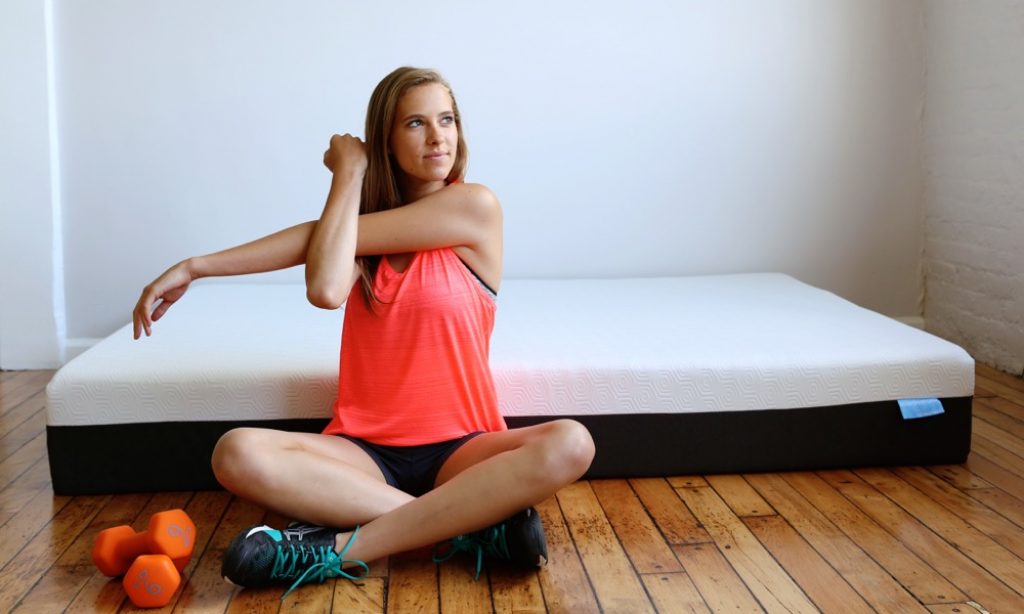
The most important thing that makes a mattress good for athletes is conformity to your joints and spine. Depending on your sport, you can slowly develop back pain or joint pain that can be made far worse by sleeping in a bed that doesn’t cushion the affected areas of your body. So, it’s extremely important to get a bed that helps your spine align in a natural, comfortable position, and that distributes your weight so that there is no pressure building up on your joints. This conformity can be achieved through a combination of mattress firmness, materials, and the structure of supporting layers.
Ventilation and cooling also play a major role in whether a mattress is good for athletic recovery. Sleeping hot in the night can stress your body out, even if it’s not hot enough to wake you up and completely ruin your sleep. The added stress of heat can prevent your muscles from recovering adequately, which in turn results in reduced performance the following day. Furthermore, heat at night can make you sweat unnecessarily, which leaves you slightly dehydrated and takes away water that your muscles need for recovery.
In addition, there are a number of small considerations that mattress designers need to consider when making a mattress suitable for athletes. For example, many athletes are heavier than non-athletes of the same size since muscle weighs more than fat. Your mattress needs to account for this by providing enough support for a heavier body and by distributing weight to reduce pressure points.
If you sleep with a partner, they may not be as tired from a load of workouts as you are and may go to sleep later than you. In that case, having a mattress that adequately isolates motion so that you’re never accidentally woken up by your partner can go a long way towards allowing you to get consistently good sleep.
Now that you know when makes a mattress good for athletes, let’s look at some of the specific features that you should consider when choosing a new mattress.
The type of mattress you get – foam, innerspring, or a hybrid of the two – will have the largest effect on how that mattress performs in terms of comfort and cooling. The majority of mattresses for athletic recovery are constructed primarily from foam because foam contours to your body in a way that most innerspring mattresses cannot. This means that foam mattresses are much better at actively working to distribute your weight, cushion your joints, and align your back and neck.
Hybrid mattresses like the two beds from Brooklyn Bedding are an interesting and surprisingly effective choice for athletes because they combine the weight distributing properties of an innerspring mattress with the cushioning of foam. The advantage to these mattresses is that you have the ability to choose whether you prefer a soft, medium-firm, or firm support based on your sleeping style.
Whenever considering a mattress, it’s also important to think about the layers that go into it. Most mattresses include three or more layers of foam. The top layers are the layers that most determine firmness, cushioning, and air flow. Some foam mattresses like the beds from Tulo and Molecule have intermediary foam layers that provide a transition between conforming top layers and a base layer of high-density foam, which can be ideal for heavyset athletes who sink easily into the mattress.
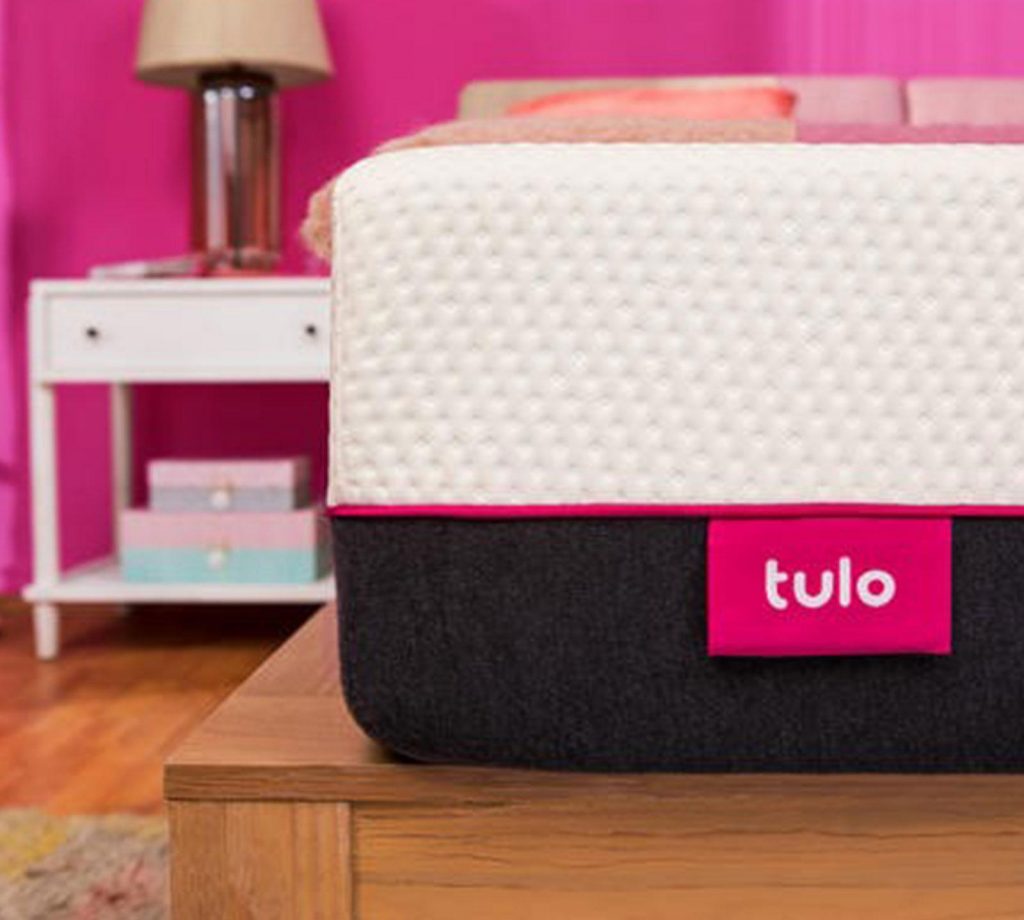
The downside to memory foam is that it isn’t very good at transferring heat away from your body, which can cause you to overheat in the night. That’s why mattresses like those from Lull, Athlete’s Choice, and GhostBed incorporate gel-infused memory foam rather than just standard memory foam. Gel-infused foam has better heat dissipation properties, so heat doesn’t build up around your body and stay there. Copper-infused foam, which is used in the Athlete’s Choice mattress, is even better at dissipating heat.
Other mattresses improve cooling by incorporating foam layers that are specifically designed to improve airflow through the bed beneath you. For example, the aerated latex foam used in the GhostBed mattress and the Molecularflo open-cell foam used in the Molecule mattress allow air to circulate through the bed, effectively carrying heat away from your body during the night.
Firmness is one of the most difficult things to decide on when choosing a mattress, but it’s also one of the most important factors in any mattress choice. The problem with firmness is that firmness ratings are highly subjective – existing users may think a mattress is firm, but you may find that it’s actually too soft for your liking or vice versa.
The best way to decide if a mattress’s firmness is right for you is to try it out, which is why so many mattress manufacturers offer a sleep trial period after purchasing a new bed.
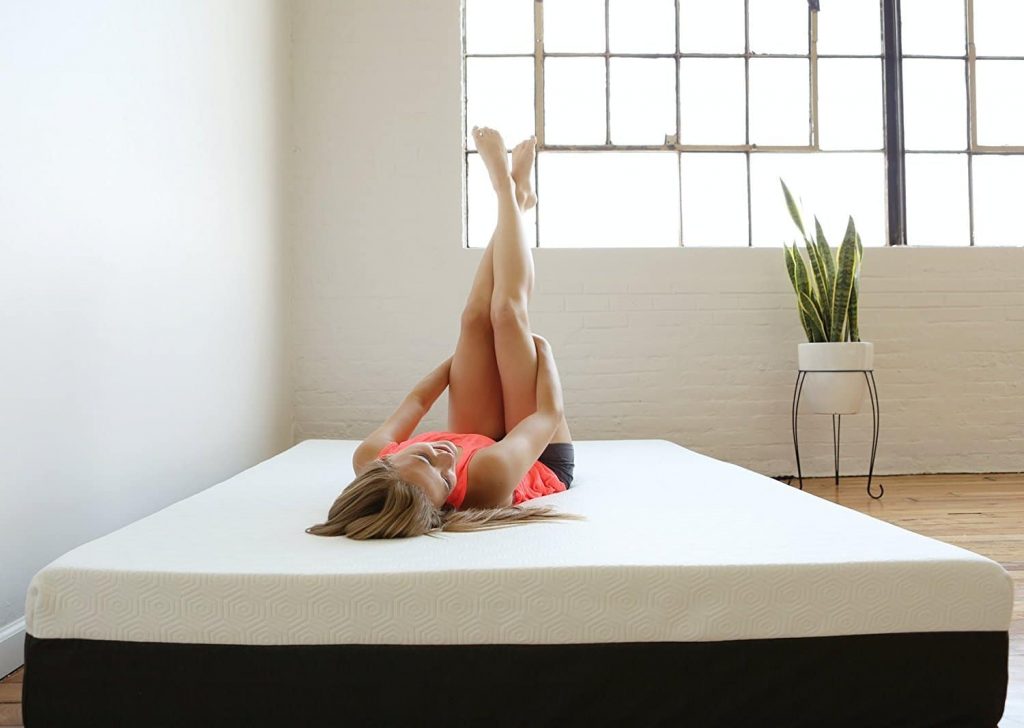
Side sleepers typically prefer softer, more plush mattresses like the “soft” hybrid mattresses from Brooklyn Bedding. That’s because side sleepers have less body area in contact with the mattress, so there’s more potential for pressure points to build up with a firmer mattress. Stomach sleepers tend to prefer a firmer mattress because the extra firmness prevents them from sinking too much into the bed and helps to keep their spine in alignment. Back sleepers report liking medium-firm beds, but may opt for either plush or firm beds depending on personal preference.
Your weight can also play a role in modifying what firmness level is right for your body and feels most comfortable. Lighter sleepers tend to need a softer mattress, while heavier sleepers tend to need a firmer mattress to support their weight.
If you sleep with a partner, having a mattress that won’t transfer vibrations across the entire bed is extremely important to avoiding waking up from a disturbance in the middle of the night. This is another reason that many athletes prefer foam beds – foam is extremely good at isolating motion so that you’ll never be able to feel your partner rolling around or getting in or out of bed. Hybrid beds like those from Brooklyn Bedding may not isolate motion quite as well, but since they use foam comfort layers, motion isolation is not a major problem.
Lack of edge support is one of the major downsides to foam mattresses, although some mattresses like the one from Eight Sleep solve this by using specialized materials in the comfort layer. Without edge support, it can feel like the bed is collapsing underneath you when you get to the edge of the mattress. However, this isn’t a major problem if you have a large enough mattress for you and your partner.
The height of your mattress isn’t typically a major consideration, although it can be important if you have an especially thin mattress. The problem with thin mattresses is that there is typically little comfort layer between your body and the relatively firm and uncomfortable support foam or springs underneath. However, light sleepers may not have a problem with thinner mattresses since they won’t sink into the bed as much.
All of the mattresses that we reviewed are between 10 and 14 inches, which is roughly standard for modern mattresses.
Most mattresses are available in a variety of standard sizes from twin to king or California king. Thanks to that, there’s not a huge need to worry about available sizes when considering which mattress is best for you. However, it’s always a good idea to check the available sizes before getting too attached to a particular mattress, especially if you have size constraints based on having a partner or the size of your bedroom.
Mattress certifications indicate that your bed was made without specific chemicals that are known to be toxic. While no one wants toxins in their bed, that’s especially important for athletes who need to be at their best. Most of the mattresses that we reviewed have the Certi-Pur US certification, which certifies that the mattress is free of nasty materials like heavy metals and formaldehyde.
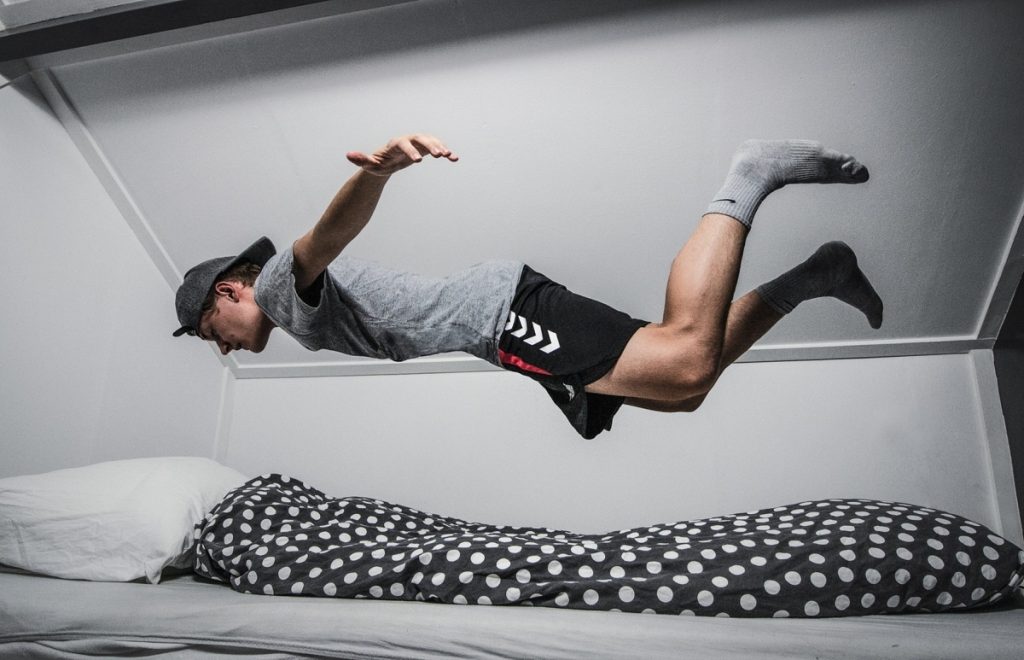
A new mattress is a major investment so you want to be confident that it will last for years of sleep. Memory foam mattresses typically last for seven to 10 years before forming indentations as long as you are good about rotating the mattress every few months. Keep in mind that gel infusions diminish the lifespan of the mattress somewhat – these mattresses may form indentations within five years. You can generally extend the life of your mattress by putting a box spring or another foundation underneath it.
Most of the mattresses we reviewed come with 10-year warranties, although two – the Layla and Nest Bedding mattresses – come with lifetime warranties. Keep in mind that these warranties are limited and may not protect against indentations over time.
Mattresses for athletes who demand performance aren’t cheap – expect to pay between $750 and $1,600 for a high-quality mattress. Options like the Eight Sleep bed, which come with integrated sleep tracking technology, cost upwards of $2,000. Budget mattresses like the one from Tulo start at around $600 for a queen-sized bed.
The single most important thing you can do to take care of your mattress is to rotate it every few months. This will ensure that you are evening out where you are sleeping on it, which in turn helps prevent indentations from forming.
It’s also a good idea to put a box spring or another firm foundation underneath your bed. This support can help the foam from sagging, which prevents damage to the bed over time.
In addition, keep in mind that you may want to put a mattress protector over your bed as soon as you get it. These covers are machine washable, which is not true of every integrated mattress cover.
Our three overall favorite mattresses for athletic recovery are the Brooklyn Bedding Spartan, the Molecule 2 mattress, and the Layla mattress. All three of these mattresses come with sleep trials of at least 100 days, and the Molecule and Layla mattresses stand out for having lifetime warranties.
The Layla mattress offers an excellent combination of support and cooling thanks to its copper- and gel-infused memory foam layers and convoluted foam layer that helps distribute your weight across the entire bed. Plus, the bed comes with a ThermoGel-infused cover that very effectively cools your body down.
The Molecule 2 mattress is the overall best mattress for athletes designed from the ground up with entirely new foam materials that are ideal for supporting athletes’ sore muscles and providing a good night’s sleep. The five-zone dynamic response layer is particularly impressive since it provides extra support where you need it to keep your body in perfect alignment.
We feel that The Pod by Eight Sleep is the best temperature-regulating mattress. The mattress comes with full temperature controls, enabling you to set the bed’s temperature anywhere from 55 to 115 degrees F. Also, the temperature can be adjusted on each side of the bed independently, so you and your partner can have different sleeping temperatures if needed.
